-
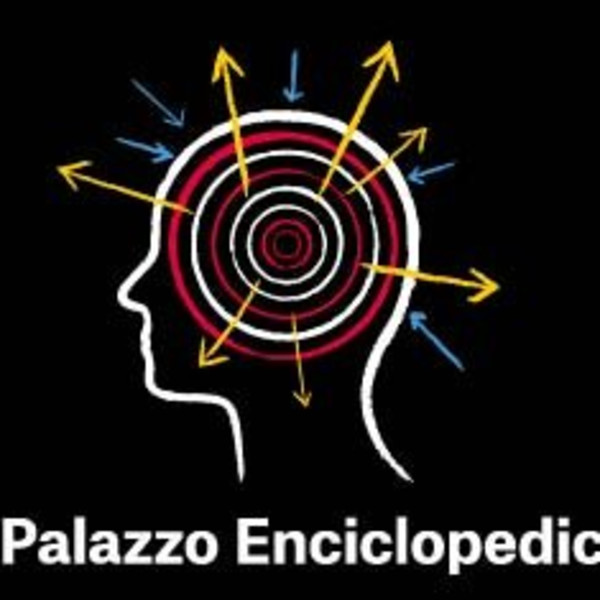
Steve McQueen: The Encyclopedic Palace, 55th International Venice Biennale
The 55th International Art Exhibition entitled Il Palazzo Enciclopedico (The Encyclopedic Palace), curated byMassimiliano Gioni and organized by la Biennale di Veneziachaired by Paolo Baratta, will open to the public fromSaturday, June 1 to Sunday, November 24, 2013 at the Giardini and at the Arsenale. The preview is on May 29, 30and 31. The award ceremony and the inauguration will take place on Saturday, June 1.88 National Participations will be exhibitingin the historical Pavilions at the Giardini, at the Arsenale and in the city of Venice. Among these 10 countries are participating in the Exhibition for the first time: Angola, Bahamas, Kingdom of Bahrain, Republic of Ivory Coast, Republic of Kosovo,Kuwait, Maldives, Paraguay and Tuvalu.The novelty is the participation of the Holy See with an exhibition at the Sale d'Armi. In Principio is the title chosen by Cardinal Gianfranco Ravasi (President of the Pontifical Council for Culture) for the Pavilion, which is curated by Antonio Paolucci (Director of the Vatican Museums).The Holy See, Argentina, South Africa and the United Arab Emirates will exhibit in the renovated pavilions of la Biennale at the Sale d'Armi in the Arsenale.This year's Italian Pavilion at the Arsenale is organized by the Italian Ministry for Cultural Heritage and Activities, withPaBAAC General Direction for the Landscape, Fine Arts, Architecture and Contemporary Art, and is curated by Bartolomeo Pietromarchi. Thetitle of the Exhibition is "vice versa".47 Collateral Events, approved by the curator of the International Exhibition and promoted by non profit national and international institutions, take place in several locations in Venice.A collaboration between la Biennale di Venezia and il Teatro la Fenice features the Special Project Madama Butterfly.Conceived with the intention to reveal the vitality and modernity of grand opera, the project presents a new Japanese production of the famous work of Italian composer Giacomo Puccini. Japanese artist Mariko Mori has designed the sets and costumes, and the opera will be directed by Àlex Rigola (Spain), director of Theatre Biennale since 2010 (Teatro la Fenice June 21 > 30 and October 12 > 31, 2013). -
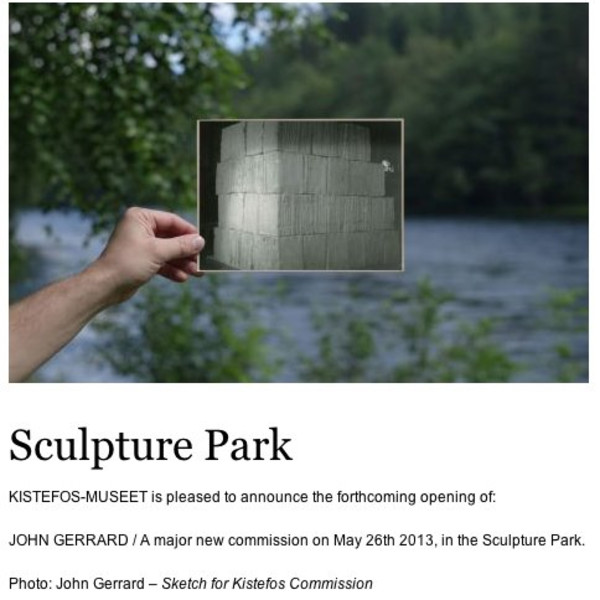
John Gerrard: A major new commission, Kistefos Museet, Norway
On the banks of the Randselva in Norway sits the now disused paper pulping factory of Kistefos. Its paper pulping machine has lain dormant since paper production was transferred to the far east in the 1950s. The factory and its grounds is now the site of Kistefos Museet, an celebrated museum and sculpture park and now the site of John Gerrard's (b. Dublin 1974) latest and most ambitious work to date.
'Pulp Press (Kistefos)' consists of a hyper-realistic, large-scale projected 3D rendering of the original pulping machine, painstakingly remade in a virtual world and reanimated to be once again producing paper. The work is housed in a dedicated poured concrete pavilion (designed in collaboration with Dublin-based architects A2) which sits along the edge of the river that originally powered the press and now powers the projection itself. The virtual paper produced in the work, each piece structurally unique, is preserved purely as data in an ever-expanding store of hard drives also housed within the pavilion.
-
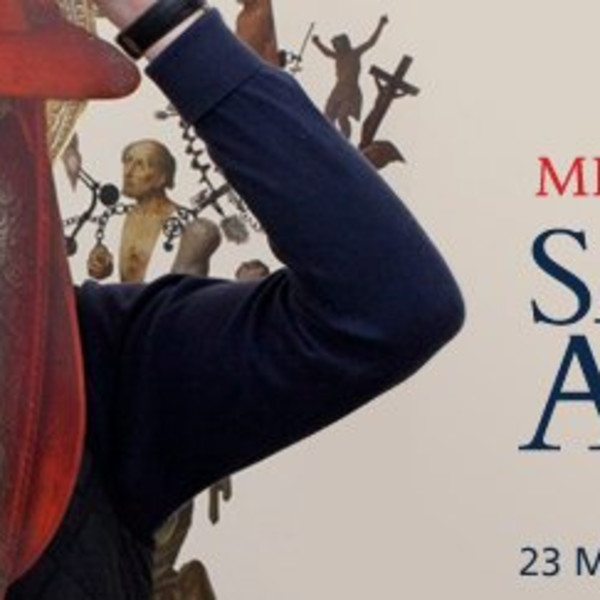
Michael Landy: Saints Alive, National Gallery London
A series of large-scale kinetic sculptures bring a contemporary twist to the lives of the saints.
Saints are more often associated with traditional sacred art than with contemporary work, but Michael Landy, current Rootstein Hopkins Associate Artist in residence at the National Gallery, has been inspired to revisit the subject for this exhibition.
Landy's large-scale sculptures consist of fragments of National Gallery paintings cast in three dimensions and assembled with one of his artistic hallmarks - refuse. He has scoured car boot sales and flea markets accumulating old machinery, cogs and wheels to construct the works. Visitors can crank the works into life with a foot pedal mechanism.
Towering over you, the seven sculptures swivel and turn, in movements that evoke the drama of each saint's life. Saints Apollonia, Catherine, Francis, Jerome, Thomas - and an additional sculpture that takes a number of saints as its inspiration - fill the Sunley Room alongside paper collages.The works by artists of the early Renaissance were particularly inspiring to Landy and you can see them, including Carlo Crivelli's Saint Jerome (about 1476), Lucas Cranach the Elder's Saints Genevieve and Apollonia (1506), Sassetta's The Stigmatisation of Saint Francis (1437-44) and Cosimo Tura's Saint Jerome (probably about 1470), displayed in the Gallery's Sainsbury Wing.
About the artist:
Born in London in 1963, Landy attended Goldsmiths College and is part of the generation of artists who became known as the YBAs (Young British Artists). He is best known for his 2001 installation, 'Break Down', where he catalogued and then destroyed all of his possessions in a former department store in London.
-
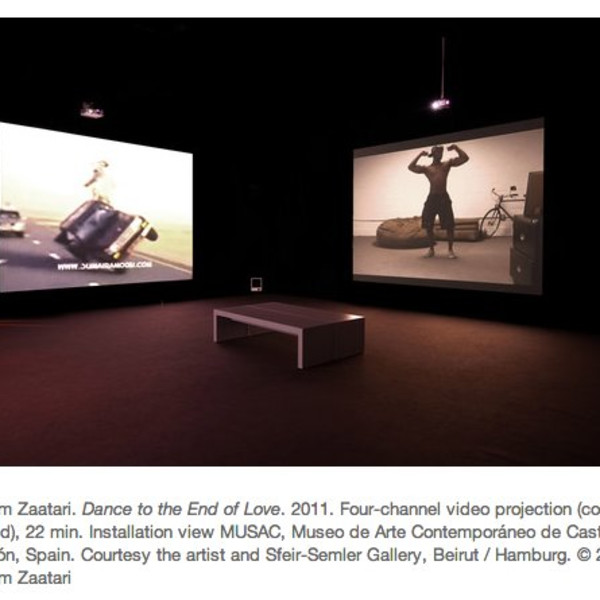
Akram Zaatari: Project 100, Moma, New York
Working in photography, film, video, installation, and performance, Beirut-based artist Akram Zaatari has built a complex, compelling body of work that explores the state of image-making today. One of the founders of the Arab Image Foundation, which aims to track down and preserve photos from North Africa, the Middle East, and Arabic communities around the world, Zaatari collects, examines, and recontextualizes a wide range of documents-from found audiotapes to family photographs to videos found on YouTube-that testify to the cultural and political conditions of Lebanon's postwar society. His artistic practice involves the study and investigation of the way these documents straddle, conflate, or confuse notions of history and memory.
Projects 100 features the American premiere of two video installations: Dance to the End of Love (2011) and On Photography, People and Modern Times (2010). Comprised of found YouTube clips made by Arab youth and shared freely online, Dance to the End of Love examines the role of social media as a space that is both intimate and public. On Photography, People and Modern Times, which tracks photographic records that Zaatari researched and collected for the Arab Image Foundation in the late 1990s, is a meditation on intimate past moments evoked by photographs and a present environment that secures their preservation. Cutting across temporal and geographic borders, these two video installations probe the nature of time and assert the permeability of memory.
This exhibition is organized by Ana Janevski, Associate Curator, Department of Media and Performance Art, and Eva Respini, Associate Curator, Department of Photography, with Katerina Stathopoulou, Curatorial Assistant, Department of Photography.
The Elaine Dannheisser Projects Series is made possible in part by the Elaine Dannheisser Foundation and The Junior Associates of The Museum of Modern Art.
-

Glenn Ligon: winner of the 18th annual Medal Award
Awarded for the first time in 1996, the annual Medal Award of the School of the Museum of Fine Arts in Boston (SMFA) is a prize rewarding exceptional artists and important art supporters for their involvement and influence in the art world. This year, the SMFA will award contemporary artist Glenn Ligon during a ceremony scheduled for 20 May 2013.
The artist is known for his works using different media, namely painting, neon lights, installations, videos and printing that explore the topics of sexuality, depiction, race or language. He uses suggestive texts, quotations issued from culturally and historically important publications of artists such as James Baldwin, Jean Genet and Zora Neale Hurston. Through his work, Ligon explores the cultural heritage of America and replaces it with the context of contemporary life.
Born in 1960 in Bronx, Glenn Ligon currently lives and works in New York. He graduated from the Wesleyan University in 1982. He had solo shows, namely at the Hirshorn Museum and Sculpture Garden in Washington (1993), at the Brooklyn Museum of Art (1996), at the St. Louis Art Museum (2000), at the Studio Museum in Harlem (2001), at the Dia Center for the Arts in New York (2003) and at the Power Plant in Toronto (2005). He has also exhibited internationally on the occasion of big group events.
-

New Faculty-Authored Book on Artist Lynda Benglis
Congratulations to Dr. Susan Richmond, of Georgia State's Welch School of Art & Design, upon the publication of her new book Lynda Benglis: Beyond Process (I.B. Tauris)! This book is the first major scholarly monograph on Benglis, a somewhat controversial artist who gained recognition the U.S. art scene in the late 20th century.
Benglis was the subject of a recent exhibition at the New Museum in New York City. You can check out some images from the exhibition here. The Library also has some exhibition catalogs that show Benglis' body of work.
Dr. Richmond will be discussing the book at an upcoming event at the Atlanta Contemporary Art Center on May 30. Full event details can be found here.
-
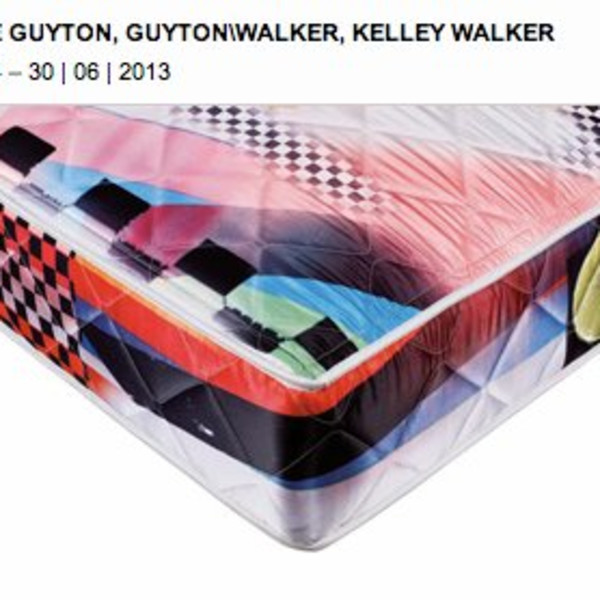
Wade Guyton, Guyton/Walker, Kelley Walker: Kunsthaus Bregenz
The timing of the simultaneous Wade Guyton, Guyton\Walker, Kelley Walker presentation could not be better. All three have been acclaimed in major solo exhibitions at eminent institutions in recent years and the intellectual and critical reception of their works is unanimous in its praise of the three distinct positions.
This exhibition is their first joint appearance and is thus all the more excitedly awaited. In contrast to their earlier practice-and many see this alone as a minor sensation- in this show they will dispense with a segregation of the three artistic personae, which is otherwise strictly observed.
But why talk of three »persons« here at all? Wade Guyton and Kelley Walker have often exhibited together, yet until now they have seen to it that the duo's activities were ring-fenced from their individual careers. Wade Guyton and Kelley Walker, for instance, both exhibited in the That's the way we do itgroup exhibition at the Kunsthaus Bregenz in 2011, but it would never have entered their heads to exhibit as a duo in the same show. The artists have always thought of Guyton\Walker as a separate artist, not as a side project, and as such has different gallery representation from either Guyton or Walker.
Surprising at first perhaps, a convincing logic nevertheless underlies this separation. For it simultaneously displays, underpins, and calls into question the concept of authorship, the role of which is not to be underestimated in the work of Wade Guyton and Kelley Walker. This is closely connected with topics such as authenticity and the duplication of the autonomous artwork in the form of editions or other types of multiple production and distribution. What makes an artistic signature recognizable? How does a signature style come about? And how can the cult of genius often connected with such a style be avoided without automatically introducing the idea of the death of the author?
On the face of it, in relation to the works of Wade Guyton and Kelley Walker, these questions are vexing, for the socalled artist's individual hand is often modified in their works through the use of the computer. By means of unconventional production techniques, however, the two artists develop highly individual pictorial languages that combine allusions to commerce and advertising culture with liberal quotations from Modernist art-particularly pop art in this case-and which alternate between analog and digital media.
Both Wade Guyton and Kelley Walker make use of found signs and images, which they transfer to canvas or wood panels as ink-jet or screen prints or transform into sculptures and installations. Here too, in Guyton\Walker, we find motifs from high and low culture. Like Wade Guyton and Kelley Walker, Guyton\Walker work with different spatial levels and divergent references. But from this the duo often develops paintings, objects, and installations that play with an impression of provisionality, chaos, the unfinished. Images and forms migrate and mutate. A painting may become a can, a sheet of printed drywall or a table. And the table may become a mattress or even a painting again.
Three parallel solo exhibitions have been developed for the Kunsthaus Bregenz, presenting to a broad public a selection of Wade Guyton's well-known X and stripe pictures, as well as Kelley Walker's now legendary brick paintings and Rorschach works. All three artists will also be developing new works for the presentation.
The presentation will avoid strict segregation of the three producers in favor of an interplay designed to bring out their similarities and differences. This may of course also involve concentrating on certain groups of works or on one particular artist on a particular floor. The dynamic relation between concept and visuality is the common thread running through the entire exhibition. Above all, though, this deliberately fiery show values dialogue-not just between the three artists, but also with the public, whom it seduces in a way that is both intellectually and aesthetically entertaining. -
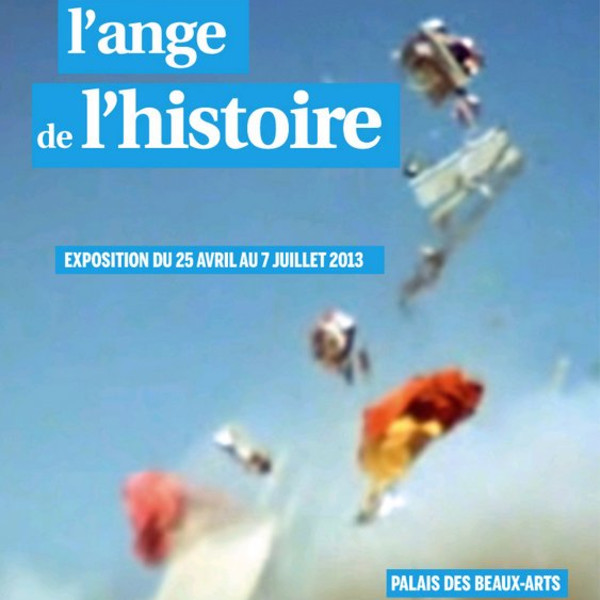
Walead Beshty: The Angel of History, Palais des Beaux-Art Paris
This exhibition draws together the works of a generation of artists who seem to be surveying the ruins of history, and who could be described as "digital-age primitives" because of their relationship with the archives of the web, or their interest for fragments of the past and cultural scraps. Here, these change their status as ready-mades to become incriminating evidence…
With: Marwa Arsanios, Jules de Balincourt, Walead Beshty, Carol Bove, Isabelle Cornaro, Simon Fujiwara, Haris Epaminonda, Rebecca H. Quaytman, Rashid Johnson, Josephine Meckseper, David Noonan, Lili Reynaud-Dewar, Clément Rodzielski, Slavs and Tatars, Meredyth Sparks. -
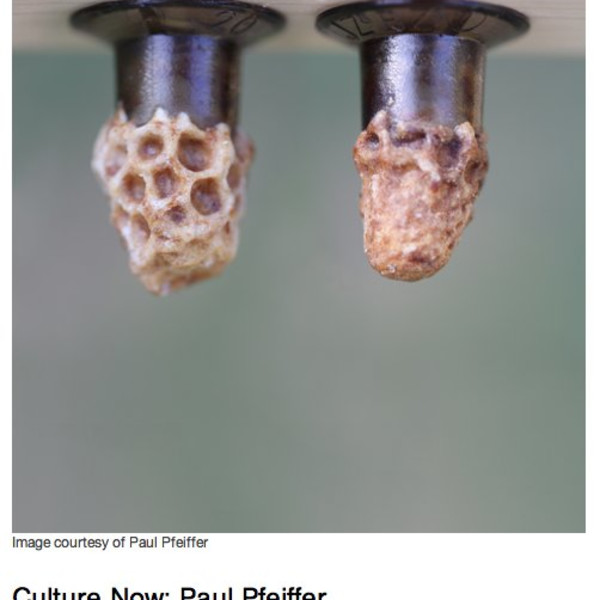
Paul Pfeiffer: Culture Now Talk, ICA London
Paul Pfeiffer (born Honolulu, Hawaii, 1966) is an American sculptor, photographer and video artist. He has had solo exhibitions at the Whitney Museum of American Art, New York (2002), the Barbican Arts Centre, London (2003), and the Museum of Contemporary Art, Chicago (2003), among many other institutions worldwide. He participated in the Whitney Biennial in 2000 and was awarded the inaugural Bucksbaum Award. In 2001 he participated in the 49th Venice Biennale. He won the visual arts Alpert Award in 2009. He studied at the San Francisco Art Institute (BFA Printmaking) and Hunter College, New York (MFA), and has lived and worked in New York since 1990. Pfeiffer is represented by Paula Cooper, New York; carlier | gebauer, Berlin and Thomas Dane, London.
-
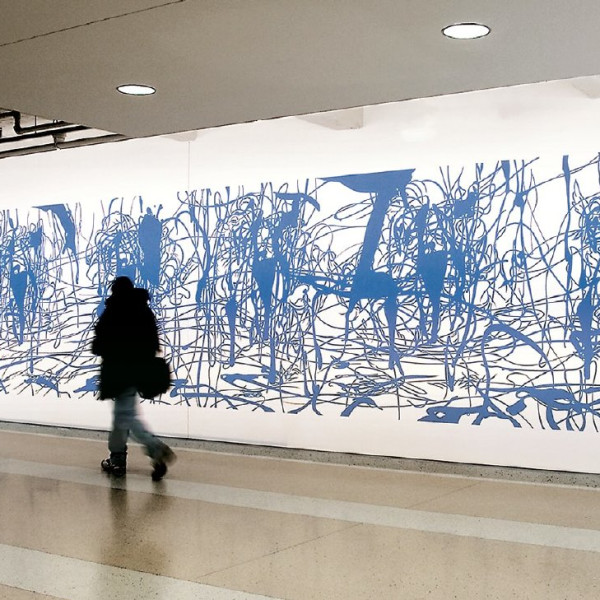
Arturo Herrera: Night Before Last, Chicago
An enticing glimpse of Arturo Herrera's Night Before Last/Chicago is visible to those entering the u.S. citizenship and Immigration Services (uScIS) building in chicago. The mural's tangled arabesques tumble out of sight as they proceed toward the atrium, sparking curiosity and conversation from visitors and employees who wish to decipher the artwork's meanings. In some areas, the swirling lines gather into evocative fragments of cartoon figures from the 1 3 disney animated feature film snow White and the seven Dwarfs. In other sections, the paint strokes loosen into vibrant abstractions, reminiscent of Jackson Pollock's famous action paintings. herrera seamlessly blends these two quintessential icons of American culture, along with myriad other references and influences, to create an artwork that resists easy definition and remains open to the unique perspectives and interpretations of individual viewers.
As the district headquarters for the uScIS, the building receives visitors from all parts of the world daily. The universally recognizable cartoon imagery of Night Before Last/Chicago starts viewers out along familiar paths, allowing them to identify select forms: Snow white's hair tied with a bow, the bulbous shoes and caps of the seven dwarfs, the handle of a pickax, a candlestick, small tufts of grass, a fluttering bird, and many other details. but the longer one looks at herrera's collaged image, the more one discovers. Soon, new and more personal associations may begin to emerge. Attempts to interpret the mural's intricately layered shapes require creativity, imagination, and a willingness to engage new ideas. Such qualities are needed for any exploration, and are thematically relevant to the many visitors who arrive at the federal building in the midst of their journey toward a new life in a new country.
Herrera-who was born in Venezuela-was once on such a journey. Following his university studies in the united States and periods abroad, he returned to chicago to pursue graduate education and eventually acquired u.S. citizenship. reflecting on his own experiences-which included many visits to buildings like this one- Herrera conceived Night Before Last/Chicago as an artwork that speaks to and energizes the broad range of people visiting the uScIS each day.
Page
69
of 72
